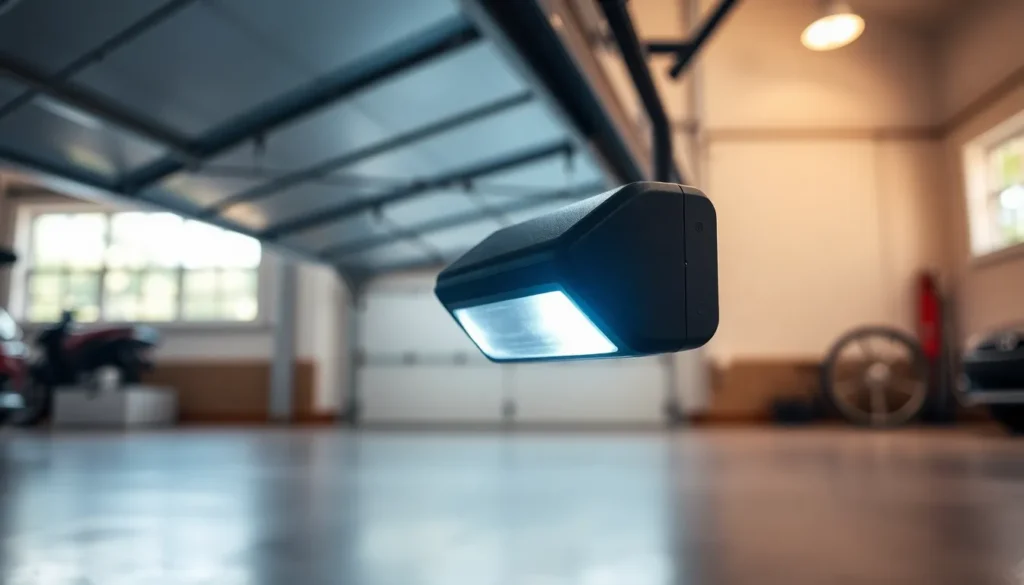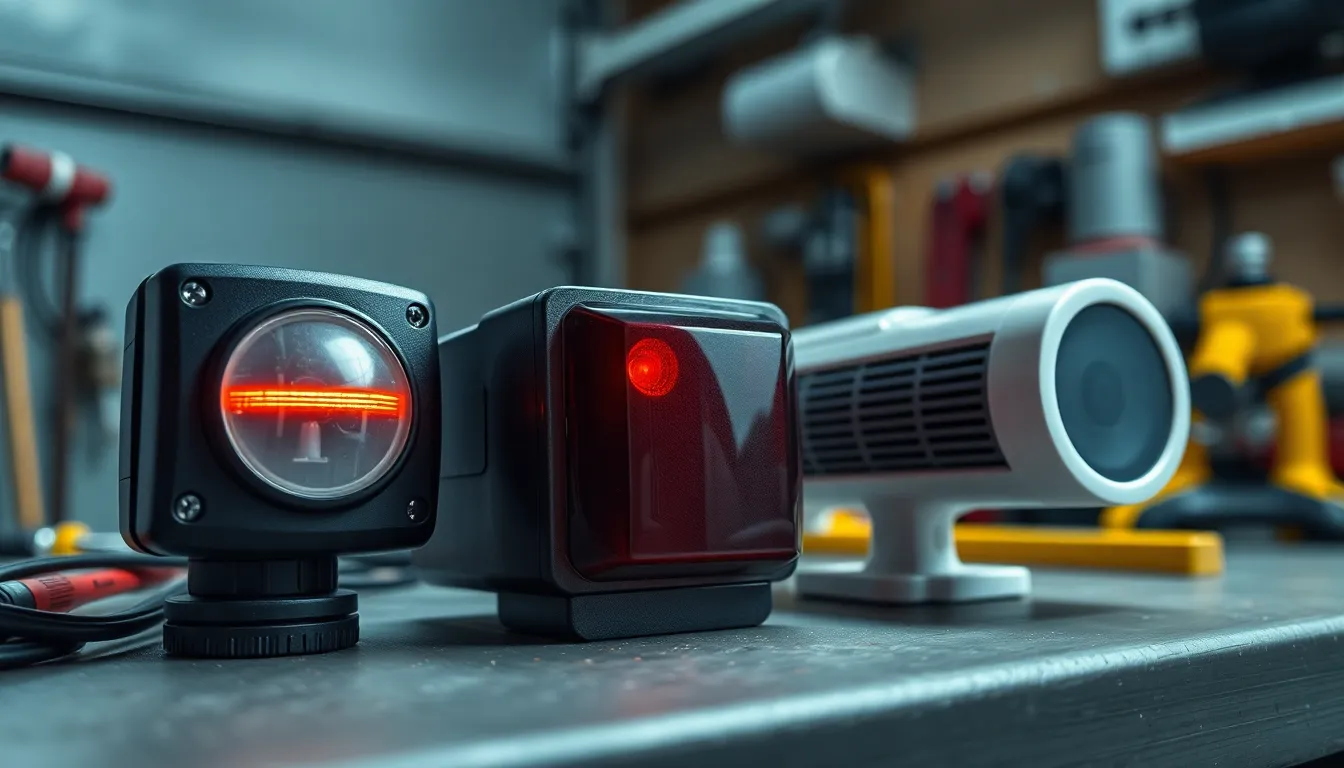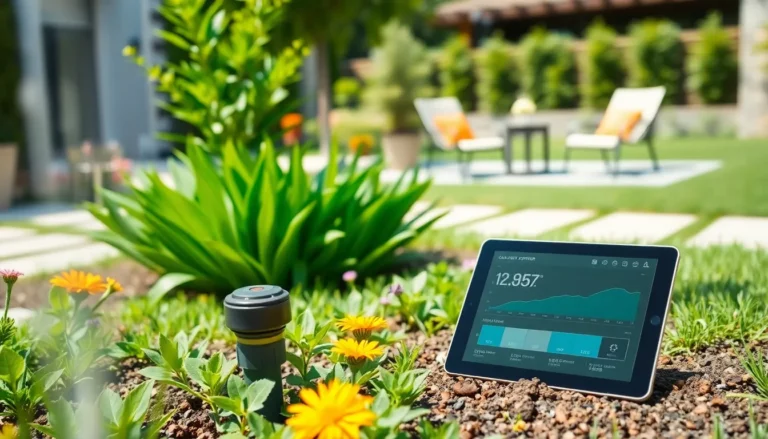Table of Contents
ToggleImagine it’s a rainy day, and you’re struggling with your garage door like it’s a stubborn teenager refusing to clean their room. Enter the garage door sensor, the unsung hero of home automation. These little gadgets work tirelessly to ensure your garage door opens and closes safely, keeping both you and your car out of harm’s way.
Not only do they prevent those awkward moments when the door decides to play hide-and-seek, but they also add a layer of convenience to your daily routine. Forget about the days of wrestling with a remote or manually lifting that heavy door. With garage door sensors, it’s all about smooth sailing—or in this case, smooth rolling. Discover how these nifty devices can transform your garage experience and give you peace of mind, all while keeping your sense of humor intact.
Overview of Garage Door Sensors
Garage door sensors play a crucial role in enhancing safety and convenience at home. These devices ensure proper functioning by detecting obstacles in the path of a closing garage door. When an object obstructs the door, the sensors trigger an immediate stop, preventing accidents and protecting vehicles, pets, and people.
Most garage door sensors require installation near the door tracks. They work through infrared technology, emitting invisible beams that detect nearby objects. Alignment is critical; misaligned sensors can hinder performance, leading to operational issues.
Some garage door sensors integrate with smart home systems. This integration allows users to control garage doors remotely using smartphones or other devices. Consequently, monitoring garage door status becomes seamless, bringing added peace of mind.
Durability features are also important. Many sensors are weather-resistant, designed to withstand extreme conditions such as rain and snow. This resilience ensures that sensors function reliably year-round, regardless of environmental factors.
Regular maintenance enhances the lifespan of garage door sensors. Cleaning the sensor lenses and checking the alignment periodically ensures optimal performance. Users should also inspect wiring for damage to maintain functionality.
Overall, garage door sensors serve as an essential component for modern garage systems. They significantly enhance safety while offering convenience for everyday use. With easy installation and integration possibilities, these gadgets contribute positively to home automation initiatives.
Types of Garage Door Sensors
Various types of garage door sensors enhance safety and convenience in home automation. Understanding each type helps in selecting the right sensor for specific needs.
Photoelectric Sensors
Photoelectric sensors utilize light beams to detect obstacles in the garage door’s path. When the door descends, these sensors trigger an automatic reverse if they detect an obstruction. This technology prevents accidents involving vehicles, pets, or individuals. Many models are user-friendly, requiring minimal installation effort. Cost-effective options are available, making them an appealing choice for homeowners.
Infrared Sensors
Infrared sensors operate by emitting and receiving infrared signals. When an object interrupts the signal, the sensor triggers an immediate stop and reversal of the garage door. Effective for detecting smaller obstructions, these sensors ensure comprehensive safety. Most infrared sensors boast weatherproof features, allowing reliable functionality in various climates. Sensors in this category often integrate seamlessly with smart home systems, enhancing overall automation efficiency.
Ultrasonic Sensors
Ultrasonic sensors employ sound waves to identify nearby objects. These sensors activate when sound waves bounce back from obstacles, ensuring the door stops safely. Ideal for detecting moving objects within the sensor range, they enhance garage safety. While installation might require professional assistance, these sensors offer high precision. Many ultrasonic models are adaptable for different garage door systems, providing versatile solutions for users.
Benefits of Using Garage Door Sensors
Garage door sensors offer various advantages that enhance functionality and safety. These devices play a crucial role in home automation systems.
Enhanced Safety
Enhanced safety is one of the primary benefits of garage door sensors. When an object obstructs the door, the sensors immediately trigger a stop, preventing accidents with vehicles, pets, or people. Users appreciate that many sensors can detect small items, ensuring that nothing gets crushed. The integration of photoelectric sensors further adds to the safety features, as they reverse the door upon detecting any obstruction. Regular maintenance, like cleaning sensor lenses, helps maintain optimal performance. Families find peace of mind knowing that their garage doors operate safely, reducing the risk of injuries.
Increased Security
Increased security is another significant advantage. Garage door sensors improve home security by ensuring that doors close properly, preventing unauthorized access. Many models can connect with smart home systems, allowing for remote monitoring and control. This connectivity enables users to receive notifications if the garage door remains open unexpectedly. With features like real-time alerts, homeowners can quickly address potential security issues. Investing in garage door sensors strengthens overall home security, providing an added layer of protection against intruders. Surveillance from garage door sensors reassures families about their safety.
Common Issues and Troubleshooting
Garage door sensors may encounter issues that affect their functionality. Identifying the problems promptly ensures optimal performance and safety.
Sensor Misalignment
Misalignment of sensors often leads to malfunction. Adjusting the sensors may solve this issue. One way to check alignment is by observing the indicator lights on the sensor; a solid light usually indicates proper function. If the light is blinking, realignment is necessary. Aligning the sensors requires careful adjustment until both units face each other directly. This quick fix enhances reliability, helping the door operate correctly.
Obstructions
Obstructions can cause sensors to fail in detecting properly. Common items that interfere include dirt, leaves, or other debris blocking the sensor’s path. Clearing the area around the sensors often resolves this problem. Regularly inspecting the sensor lenses ensures they remain clean and unobstructed. Even small objects can trigger a stop command, so maintaining a clear space is crucial for optimal function. Frequent checks help prevent unexpected door reversals or malfunctions.
Conclusion
Garage door sensors are invaluable additions to any home. They enhance safety and convenience while integrating seamlessly into smart home systems. With their ability to detect obstacles and prevent accidents, these sensors protect both people and property.
Regular maintenance ensures optimal performance and longevity. By keeping sensors clean and properly aligned, homeowners can enjoy peace of mind knowing their garage doors function reliably.
Investing in quality garage door sensors not only boosts security but also elevates the overall garage experience. Embracing this technology can lead to a safer and more efficient home environment.








